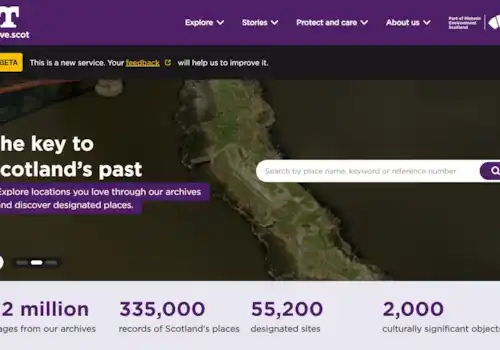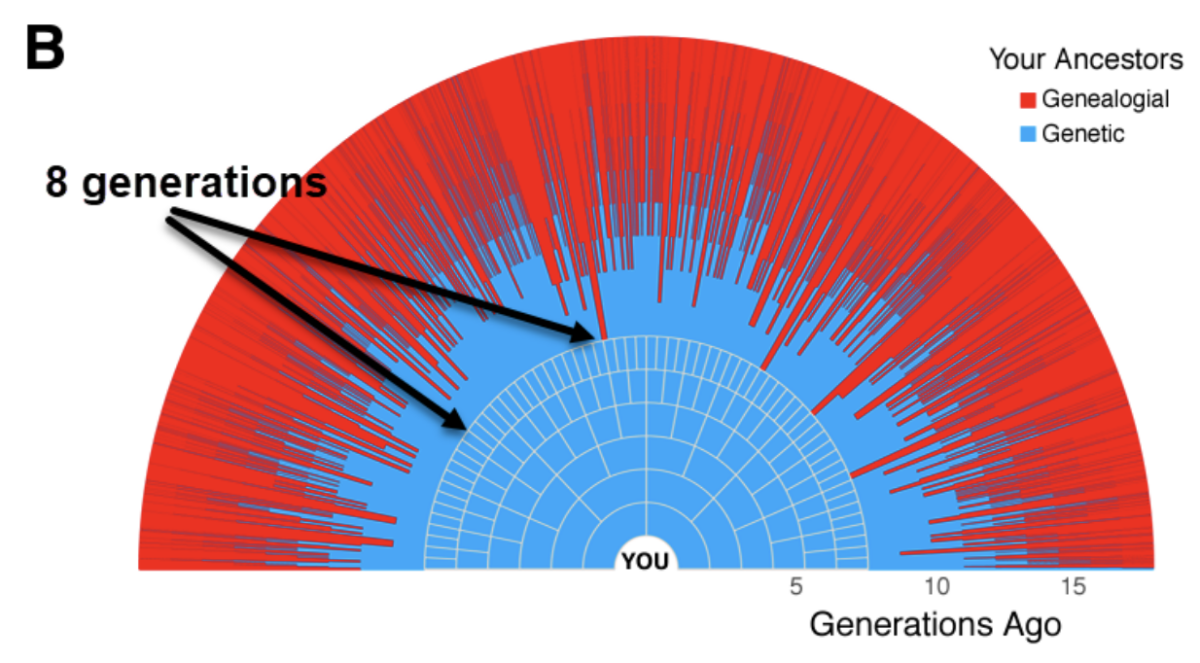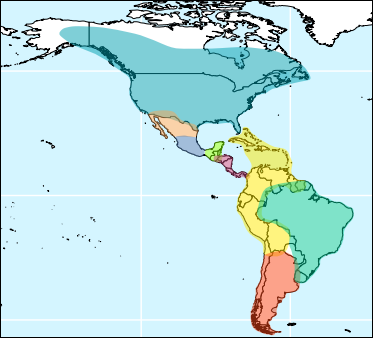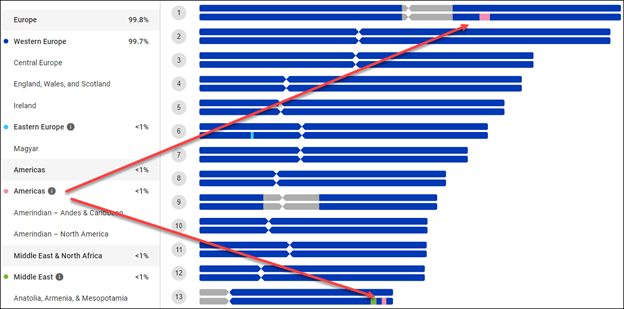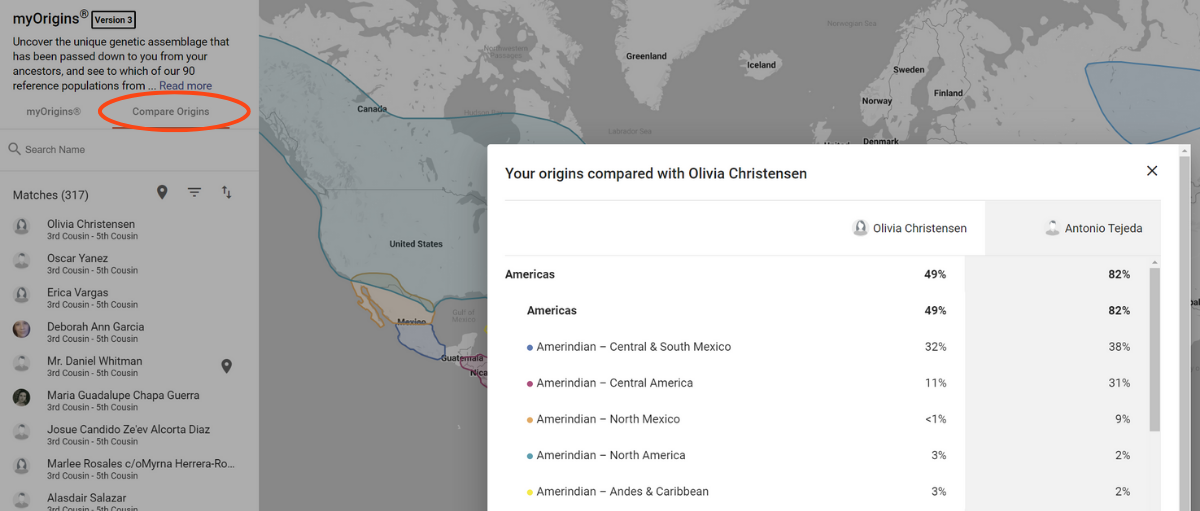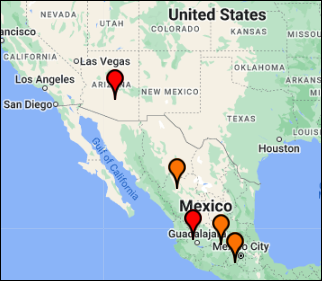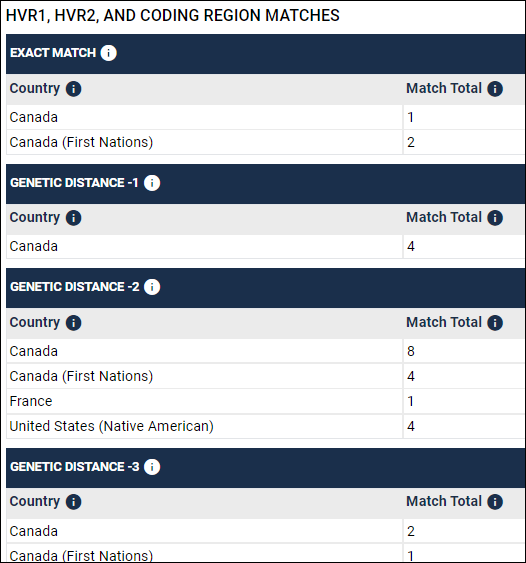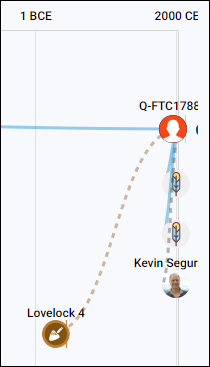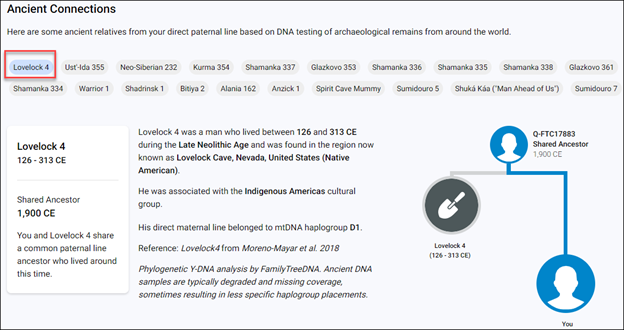07 November 2022
|
Does your family have a story indicating that you have a Native American ancestor? Here’s how you can use your DNA to help you determine your ancestry.
Many families in North and South America have similar stories. However, some people whose families don’t have those stories could receive a surprise when they discover through DNA testing that they, too, have Native American ancestry.
Would you like some assistance piecing this puzzle together? We’ve compiled 13 steps to help you trace your Native American heritage.
Step 1: Learn About Your Native American Family History
What: Collect the family history, stories, and documents of any Native American ancestors you may have.
Why: A collection of research gives you an idea of where to start your research.
You can always start by talking to your family. Start by documenting the details you learn. If you have an oral history of Native American heritage, is it on your mother’s or father’s side? Do you know which ancestor is reported to be Native American? Are the family stories about your ancestors consistent? Talk to your relatives and compile what you learn. The information you gather will help focus and guide your research.
Genetic Tree and Genealogy Tree
Your genealogy tree and your genetic tree will differ. Your genealogical tree, in red, includes all of your ancestors, and the blue portion shows the DNA inherited from specific ancestors.
If you have Native American ancestors in your genealogy tree from seven or more generations ago, counting yourself as generation one, you may have only a trace of their autosomal DNA today. This chart shows an example of the DNA inherited from each individual ancestor.
You’ll notice, someplace around seven or eight generations back in time, the amount of blue in a lineage starts to vary, and drops out entirely in some lines. The more blue a block is, the closer the relationship is.
It’s unlikely that you are completely missing DNA from one of your ancestors within the past six generations.However, it becomes increasingly likely that you inherited either no DNA from some ancestors or fragments too small to discern.
Ancestral DNA is divided unevenly during inheritance from parent to child in each generation. While you do inherit half your DNA from each parent, you do not necessarily inherit exactly half of the DNA they received from each ancestor. You could receive all of the DNA that your parents inherited from a specific ancestor, none of it, or some portion of it.
For example, if one of your parents inherited a 20 cM (centiMorgan) DNA segment from a specific ancestor, you might inherit all 20 cM from that parent, none of it, or maybe eight cM, based on random inheritance.
Therefore, you might not inherit any Native American autosomal DNA from your Native ancestor, depending on how far back they are located in your tree, combined with the randomness of inheritance.
Keep in mind that a Native American ancestor may have been admixed themselves, meaning that the ancestor you thought was full blood may have already had some other ancestry blended with the Native American ancestry.
Don’t fret if you don’t carry any Native American DNA today, other family members may carry some of your Native American ancestor’s DNA. Plus, there are different kinds of DNA tests:
- Family Finder (autosomal)
- Big Y-700 (Y-DNA)
- mtFull Sequence (mtDNA)
Step 2: Test Your Autosomal DNA for Native American Ancestry
What: Testing your autosomal DNA gives you a breakdown of the amount of Native American ancestry in your DNA.
Why: Test results tell you which reference populations in the Americas you match.
Our autosomal DNA test is known as Family Finder. This test provides a breakdown of your ethnic makeup and is designed to help you find relatives on either side of your ancestral lines within the last five generations. Our autosomal test provides different reports and tools to help you understand your results and ultimately find out more about your Native American ancestry.
myOrigins®
myOrigins gives you a breakdown of your ethnic makeup by percent. myOrigins compares your DNA to the DNA of reference populations around the world that have been tested through scientific research. Your myOrigins results can go back in time much further than your matches.
You may fall into any or all of the ten Native American population regions, indicating that you likely have an indigenous ancestor from various locations in North or South America.
Your population estimate may range from 100% to less than 1% in any category.
If your results don’t show Native American heritage, your relatives may. This is because they inherited a different mixture of DNA from your common ancestors. Full siblings inherit 50% of their DNA from each parent, but it is not the same 50% unless you are an identical twin or triplet. If your parents are not available, testing your siblings may be insightful.
Step 3: Test Your Relatives with Native American Ancestry
What: Test people who you think can give you a better understanding of your Native American lineage.
Why: Since FamilyTreeDNA can tell you if your matches are maternally or paternally linked, you may get more value out of the DNA tools when you link relatives to your tree.
Try testing older generations first since they are more closely related to the ancestor you are looking for. They are more likely to carry some of the autosomal DNA you’re looking to document in your research.
For example, you only inherit half of your parents’ DNA, meaning you don’t inherit half of their DNA. Your parents only inherited half of their parent’s DNA, so your aunt or uncle will also have DNA from those ancestors that you and your parents might not have.
Testing relatives can help you gain access to DNA you wouldn’t necessarily find through your test alone.
Your relatives’ test results are just as important to your research as your own and may hold the key to breaking down that brick wall.
Step 4: Use the Chromosome Painter To Locate Native American Segments
What: Explore your DNA and make note of segments with Native American ancestry.
Why: You will find out how sections of your DNA compare to those of your matches.
The Chromosome Painter uses color visuals to show you which segments of your autosomal DNA come from your myOrigins Continental Regions and Super Populations and allows you to break down your origins across your 22 autosomal chromosome pairs.
Although this individual has less than 1% total Amerindian DNA, they have detectable (pink) Native American segments on chromosomes 1 and 13.
FamilyTreeDNA also provides detailed segment information for each population identified, on each chromosome.
The information you can take from the Chromosome Painter, together with other tools and information, can help identify your ancestors who contributed those Native American segments.
Step 5: Compare Origins in myOrigins
What: Compare population results with relatives.
Why: Learn which matches share similar Native American ancestry.
myOrigins provides the ability to compare your population locations with your matches. When viewing myOrigins, simply select Compare Origins, then click on the name of the match you wish to compare. Only two people who have both opted-in to this feature can compare their ethnicity results.
Step 6: Review Shared Segments in the Chromosome Browser
What: Look at which linked relatives share segments of DNA.
Why: Identifying which of your matches share the same Native American segment indicates that your common ancestor was Native American, and helps you identify who contributed that segment to both of you.
The Chromosome Browser allows you to examine your DNA matches to see who matches you on your Amerindian segment(s). Remember, you inherited two copies of each chromosome, one from your father and one from your mother, so you’ll need to be sure you’re viewing people who match you on your Native American segment from the proper side of your tree.
If you create a tree or upload a pre-existing one through a GEDCOM file, and link your known matches to their profiles in your tree, FamilyTreeDNA assigns common matches to parental sides for you, using triangulation.
You can then just click to filter your matches maternally or paternally. (The filter only works if you have linked your matches in your family tree.)
You can select, view, and compare your matching segments using the Chromosome Browser. You can also download your entire match segment file by clicking “Download All Segments” on the Chromosome Browser and sort your matches to identify people who match your Native American segment.
Once you locate people who share your common Amerindian segments, you’re well on your way to identifying your common ancestor.
Step 7: Test Your Y-DNA for a Native American Haplogroup
What: Test biological males on the lineage that has or may have Native American ancestry.
Why: Test results provide your Y-DNA haplogroup, which could identify Native American lineage.
Y-DNA comes from the father and is not mixed with the DNA of the mother, so it is never divided like autosomal DNA. Biological males and females are distinguished from one another by the presence of a Y-chromosome, which fathers pass on intact to their sons. Daughters do not receive a Y-chromosome, so females do not have a Y-chromosome to test. However, biological females who are interested in a particular line of ancestry may test a biological male from the line in question.
For example, to obtain her father’s Y-DNA information, a biological female could test her father, or a brother. She could also test a paternal uncle or his son. It can’t be just any male cousin, though. It must be someone from the paternal line. In western culture, the Y-DNA often follows the surname line, so biological males from specific surname lines are easy to recognize.
Biological males whose direct paternal line is Native American will have specific haplogroups within Y-DNA haplogroups Q and C.
Y-DNA haplogroup Q-M3 and its subclades are the most predominant Native American haplogroups. Native American men are also found in Y-DNA haplogroup C-M217’s subclade, C-P39.
Your Y-DNA will also match that of other biological males whose direct paternal ancestor was Native American.
The Matches Map shows where your matches’ ancestors were located and may help you by indicating an area or location. If you are a biological male and believe that your Native American ancestor is in your direct male (surname) line, you’ll want to take our Big Y-700 test to receive a very specific confirmed haplogroup. You will also match with other testers who will verify, or refute, Native American ancestry from that direct genealogical line.
Step 8: Test Your mtDNA for a Native American Haplogroup
What: Test the lineage that has or may have Native American ancestry.
Why: Test results provide your mtDNA haplogroup, which could identify Native American lineage.
Both males and females inherit their mothers’ mitochondrial DNA (mtDNA), but only females pass it on. Therefore, everyone can test for mtDNA to determine their direct maternal line.
If your direct maternal line is Native American, you will have a mitochondrial haplogroup within haplogroups A, B, C, D or X. The mtFull Sequence test will provide you with the most refined haplogroup, and your closest matches.
Your Matches Map will show where your matches’ ancestors are known to have lived.
Step 9: Review your Native American Haplogroup Origins
What: Explore the countries where your haplogroup is found today.
Why: Identifying where the haplogroups of people you match are found helps you identify where your ancestors might be from.
Haplogroup Origins allows you to view your Y-DNA and mtDNA matches’ haplogroup information along with a brief description of their anthropological origins. Knowing the origins of your haplogroup can help you focus your research in a particular area.
For both Y-DNA and mtDNA, the Haplogroup Origins tab provides a list of the haplogroups of the people whose Y-DNA or mtDNA is shown below, and where the ancestors of your matches carrying those various haplogroups are found.
Step 10: Review your Native American Ancestral Origins
What: Ancestral Origins provides the location of the earliest known ancestor (EKA) of your matches.
Why: Finding where your closest matches’ ancestors were found suggests areas where your ancestors may have lived too.
The Ancestral Origins page displays the self-reported ancestral information of your Y-DNA and mtDNA matches who have provided a country of origin for their paternal EKA.
These locations are based on tester-entered information, so if a tester initially believed their ancestor was French, France will appear in these reports if they don’t update their ancestor’s location information with their newly discovered Native American ancestry. However, even “France” is useful in this context because these locations suggest French-speaking Canada would be a good location to research.
Step 11: Research Y-DNA and mtDNA Haplotrees
What: Research how haplogroups connect to and divert from each other.
Why: You won’t match everyone else in your haplogroup, but the location of where the ancestors of others in your haplogroup were found is important to your family history.
You probably won’t match everyone in your haplogroup, but it’s easy to see where the ancestors of other people in that haplogroup are located.
FamilyTreeDNA offers free public haplotrees for both Y-DNA and mtDNA. These trees show locations where each haplogroup is found based on testers’ entering the location of their EKA.
Y-DNA Haplotree
For Y-DNA, haplogroup C-P39 is less common than haplogroup Q subclades for Native American males, but it does have several haplogroup branches that you can see on our Y-DNA haplotree.
While providing testers with increasingly detailed information, taking the Big Y-700 test continues to expand the 60,000+ branches of the Y-DNA haplotree.
mtDNA Haplotree
The mtDNA haplotree is newer and still growing, but it functions the same as the Y-DNA haplotree. The Million Mito Project was launched in 2020 to flesh out and expand the mtDNA haplotree by encouraging testers to order our mtFull Sequence test.
Enter the branch name you are seeking, and that branch will be displayed, along with the closest “neighbor” and parent branches that can be useful in understanding the migration path of your ancestors.
Step 12: Use FamilyTreeDNA Discover
What: Discover more detailed reports about connections to your Y-DNA haplogroup.
Why: Understanding when your haplogroup was formed and which ancient DNA samples you are related to provides a glimpse back in time to when and where your ancestors and their relatives lived.
Recently, FamilyTreeDNA introduced the new Discover reports. Different reports and tools include the Time Tree, which shows when a particular haplogroup was “born.”
Additionally, the Ancient Connections report and the Notable Connections report are shown on the Time Tree, and on dedicated pages, as well. For example, Lovelock 4 is the “closest” ancient connection for Native American haplogroup Q-FTC17883.
One incredible story to come from Y-DNA testing is that of Kevin Segura. Segura was surprised to discover that he shared an ancestor with the remains discovered in Lovelock Cave. As a bonus, through DNA testing, Kevin discovered the identity of his father.
Other notable connections include one of the Navajo Code Talkers, William Tully Brown, and Shawnee Chief Blue Jacket’s descendants.
Step 13: Create a Pedigree Chart
What: Create a chart showing three generations back.
Why: Keep track of all the information you have in one place.
Many people test their mtDNA, and Y-DNA, to discover whether their direct maternal and direct paternal DNA ancestors were Native Americans. While autosomal DNA results need to be sorted out, there’s no ambiguity about mtDNA and Y-DNA results.
Population results may reveal that you have Native American ancestors. You may be able to identify which parent is on which side based on oral history, Compared Ethnicity, Shared Segments and Family Matching. You will still need to identify which ancestor in that line was either a full or partial Native American, which is where Y-DNA and mtDNA can help. They don’t dilute with time, so they reach back to the beginning of humankind.
This long reach enables you to build your own Haplogroup Pedigree Chart.
To begin, everyone has four grandparents and eight great-grandparents.
By testing some combination of people, such as yourself, your parents, siblings, grandparents, aunts and uncles, and so forth, you can obtain definitive haplogroup information about your ancestors. This reveals the story of your ancestors, long before the advent of surnames.
You may discover your Native American ancestors—ones you expect and, perhaps, ones you don’t.
Who is waiting for you?
Native American Resources To Help You Learn More
Roberta Estes writes at DNAeXplain and provides Native American resources. Her book, DNA for Native American Genealogy, includes tribes and geographical locations, both modern and ancient, associated with known haplogroups, and is available for purchase.




